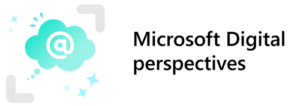 [Editor’s note: This content was written to highlight a particular event or moment in time. Although that moment has passed, we’re republishing it here so you can see what our thinking and experience was like at the time.]
[Editor’s note: This content was written to highlight a particular event or moment in time. Although that moment has passed, we’re republishing it here so you can see what our thinking and experience was like at the time.]
Microsoft has migrated its internal Human Resources portal to the cloud, a key step in its ongoing companywide digital transformation. Called HRweb, the portal is the second busiest at Microsoft, and represents the last major internal employee portal to move to the cloud. The migration has transformed the experience the company’s employees have when they engage with HR.
The move from SharePoint 2010 to SharePoint Online created many improvements, including serving up smarter personalized information to employees and delivering better search results, says Jay Clem, general manager of Industry Solutions in Microsoft Digital.
“Shortly before I joined the group, plans were in place to move from SharePoint on-premises to SharePoint Online,” Clem says. “It was largely a technology transition, but we knew that, for employees to have the best experience possible, we also needed to change core business processes in HR.”
The shift wasn’t without challenges.
The first attempt to move to the cloud was two and a half years ago. The team had scoped the move but was closely watching two HR services that had just launched that were not performing as well as expected. In addition, the team’s plan to copy the existing HRweb portal to SharePoint Online using a “lift and shift” model wasn’t robust as it needed be across multiple devices, and it didn’t do enough to take advantage of the benefits of moving to SharePoint Online. For those reasons, a decision was made to call off the migration and go back to the drawing board.
“Today the story is different,” says Rajamma Krishnamurthy, a principal group program manager on the Microsoft Digital Human Resources team. “This time we were fully prepared, and the technology was ready and capable.”
The Human Resources IT function is more robust, and procedures for moving internal portals to SharePoint Online have matured, she says, pointing to several other internal portals successfully making the move to SharePoint Online. Additionally, the connection between Microsoft Digital, the company’s IT group, and the Human Resources function is tighter.
There were several technical reasons why the just-finished migration went so well, but there is also a more simple, human reason. “The difference was Joseph,” Krishnamurthy says.
Joseph is Joseph Jassey, Director Industry Digital Strategy – Industry Solutions in Microsoft Digital who not only led the HRweb migration, along with Cameron Thompson and the Human Resources team, but built it from the ground up, gaining key support from everyone involved well before the actual migration started.
“Joseph, Cameron, and the team have worked long and hard to leverage our SharePoint Online platform for HRweb,” says Andrew Winnemore, a general manager of human services for Human Resources.
For a transcript, please view the video on YouTube: https://www.youtube.com/watch?v=gEQrRhVJp9w, select the “More actions” button (three dots icon) below the video, and then select “Show transcript.”
Getting it rightA natural storyteller, Jassey led the migration in his own unique way.“When I came on board, I was hired specifically for this,” Jassey says. “They said, ‘Here is our portal, we want to move to the cloud, we have 90,000 global employees using this every month, can you help us do this?’The first thing Jassey did was figure out why the migration didn’t work the first time.
“You’re not just dealing with the technical aspects of it, you also need to look at the culture, about why we do things the way we do them—why people weren’t ready for the move.”
As Jassey dug in, he learned the migration was cancelled for a variety of reasons: a website that was overly complex, a host of technical challenges, a business group that was wary due to a recent bumpy roll-out, and hesitation from internal leadership for such a wholesale shift. There were tactical challenges as well, including uncertainty around using lift and shift to move the entire site “as is,” concerns that performance would be slower in the cloud, questions around search functionality, and rising security standards.
Along with a series of personal interviews across teams, Jassey benchmarked with portals that had been successful, including the IT and legal sites, which had just finished their own migrations. After a tour of the Corporate, External, and Legal Affairs (CELA) portal, he liked what he saw, and brought those lessons back to HR.
The Human Resources Microsoft Digital leadership team loved seeing the CELA success story. With their interest piqued, Jassey asked for a proof of concept—nothing big, just something that dabbled in what was possible. “I told them, ‘This is how we want to approach this,’” Jassey says. “We can start small and see how it can be done.’”
Jassey drove moving a section of HRweb documentation to the cloud, sending a small amount of real, representative information. It worked, and Jassey then asked to move the full website in the same way. “I wanted them to feel confident, and that it was easy,” he says.
The original migration was built around a “lift and shift” approach, which called for copying everything on premises on SharePoint 2010 directly to SharePoint Online. The prevailing thinking suggested that most of the work was done two and half years ago—why not just pick that up and run with it?
But there were concerns with that approach. “I felt that would put us in the same structure as before, and I didn’t think it would give us the opportunity to rethink everything. From my research and conversations, I felt we needed a fresh start, new thinking, to push through it—I knew it could be done.”
Asking ‘why not?’
Jassey, who mentors kids who immigrate to the US from his native Gambia, is always encouraging everyone he meets to get out of their comfort zone, and the HRweb migration to SharePoint Online was no different.
“A growth mindset—that’s when you feel uncomfortable, that’s when you grow,” he says.
For the kids, it means encouraging them to consider careers in technology. For the Microsoft employees who worked on the HRweb migration, it was encouraging them to feel safe starting from scratch.
By starting over, the team was able to fix many existing problems like simplifying content, reducing subsites (moving from 398 subsites down to just 12), and simplifying security. The team was also able to make the employee experience more personal.
The result is a site, by early reviews, that is winning accolades from both employees and HR.
“It’s been a real joy to watch how the team has worked together to get us to this point,” Winnemore says. “Moving to the cloud is helping us build a first-class employee experience and modernize our HR systems and processes.”
For his part, Jassey says the human component cannot be underestimated. Having a dedicated, flexible team that was willing to try innovative approaches working on the project was the key differentiator.





